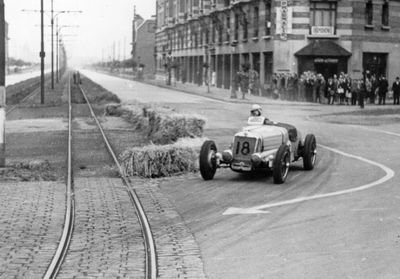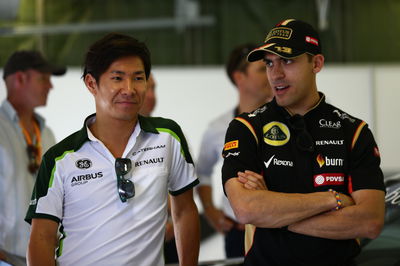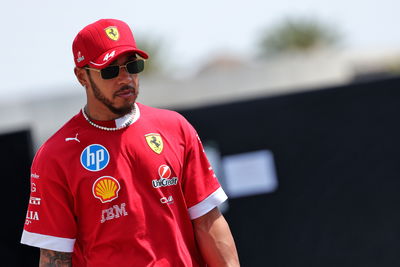Kate Walker: Achille Varzi

Motorsport is dangerous. It says so on the tickets, and proof can be found in the history books. But while motor-racing is a dangerous occupation, so too are women and morphine, as pre-war Italian legend Achille Varzi discovered to his chagrin.
Born in 1904, Varzi spent his career competing with Tazio Nuvolari for the title of Italy's greatest racing driver, and their relationship was not dissimilar to that between Ayrton Senna and Alain Prost half a century later.
Their rivalry was one of the hottest motor-racing stories of the 1930s, and sold countless newspapers. The two - one cautious and calculating, and the other a risk-taker always pushing the limit - were some of the greatest talents of the pre-war era, and drove for the same teams over the years, although never at the same time: Varzi had it written into his contracts that he would not partner Nuvolari.
Further echoes of the Prost-Senna relationship can be seen in archive footage of the 1933 Monaco Grand Prix, which Varzi contested in a Bugatti Type 51. The Italian pair fought hard for the duration of the race, with the lead changing with seemingly every passing lap. Varzi emerged victorious on that occasion, payback for his humiliation at the previous year's Targa Florio, at which Nuvolari had proved himself to be the dominant force.
A true racing legend, Varzi's four-wheeled racing career encompassed time spent in the cockpit of every pre-war marque of note, and the Italian drove for each brand while it was at the top of its game: Alfa Romeo in the late 1920s (and again in the mid-'30s); Bugatti in the early 1930s, when Ettore's blue beasts ruled the roost; Auto-Union in the mid-1930s, when Adolf Hitler was pumping money into the German motorsport industry to assure dominance; and Maserati towards the end of that decade, when war was on the horizon.
As was common in racing drivers of the era, Varzi did not limit his experience to single-seaters, and the winner of the 1933 Monaco Grand Prix can also be found on the entry lists of every great race of the pre-war era: the Targa Florio, the Coppa Ciano, the Mille Miglia... Varzi won each of the aforementioned events in 1934, in addition to a series of grands prix and grandes epreuves across Europe and North Africa.
But 1934 was to be the peak of Varzi's career, as the usually so calculating racer made one very big mistake. Following his move to Auto-Union for the 1935 seasons, Varzi fell in love with Ilse Pietsch, the wife of one of his teammates. The feeling was mutual, but Pietsch had a greater love, one which she shared with her new boyfriend: morphine.
As was only to be expected, Varzi's on-track performances declined as his addiction became overpowering, and it was not until the Second World War that he was able to quit the drug. Once clean - and once motor-racing resumed after the war - Varzi set to work rebuilding his career, and secured two victories in 1946.
But it was the beginning of the end for one of the greatest racing drivers of the pre-war era, and Varzi died while practicing for the 1948 Swiss Grand Prix at Bremgarten. In what was only the second major accident of the cautious racer's career - itself an anomaly in the era - Varzi lost control of his car on an oily section of track and died when the machine overturned.
Following Varzi's death, the FIA introduced the mandatory wearing of crash helmets for racing drivers. Until motivated to improve safety standards by the on-track and highly publicised death of one of the greatest racing talents of his day, the FIA had deemed crash helmets optional for racing drivers.
Despite the sex, the drugs, the scandal, and the improvements in safety that followed his death, Varzi's lasting legacy can be found in his epitaph, a fitting - and beautiful - tribute to any great racing talent lost too soon:
"Perhaps you were destined to die, Achille, because in your driving there was something of that genius which is one of Nature's greatest mysteries, and Nature strives to destroy those who come too close to her.
"Beethoven was struck with deafness when he seemed about to transcend man's powers of musical expression. Galileo was blinded when he tried to probe infinity and its laws. Leonardo da Vinci's hands were crippled when he was about to come nearer to perfection than any man before him.
"And you too, Achille, were destroyed when you sought to cross the known frontiers of man-made speed. Now you are preparing for another race, the last great race. A race without danger, without care or sorrow..."
By Kate Walker











